
When it comes to mirrorless photography, it's like navigating a labyrinth of endless possibilities, each turn presenting a new opportunity for stunning captures. As we venture into the realm of elevated mirrorless photography, we've uncovered twelve expert tips that have the power to transform your images from ordinary to extraordinary. From mastering the exposure triangle to harnessing dynamic range and embracing high-speed shooting modes, these tips are the keys to unlocking the full potential of your mirrorless camera. But there's more to it than just these essentials; there are nuances and intricacies that can truly set your photography apart. So, let's embark on this journey together and discover the secrets to taking your mirrorless photography to the next level.
Mastering Exposure Triangle
Mastering the exposure triangle is essential for capturing stunning mirrorless photographs in any lighting conditions. Understanding the relationship between aperture, shutter speed, and ISO allows us to achieve the perfect exposure. By manipulating these three elements, we can control the brightness, darkness, and overall mood of our images. When it comes to white balance techniques, the exposure triangle plays a crucial role in ensuring accurate color representation. Adjusting the temperature and tint settings according to the light conditions can make a significant difference in the quality of the final image.
Additionally, metering modes are an integral part of the exposure triangle. Understanding the different metering modes, such as matrix, center-weighted, and spot metering, allows us to accurately measure the light in a scene and make informed decisions about our exposure settings. These modes enable us to prioritize different areas within the frame, ensuring that the exposure is optimized for the most critical elements of the composition.
Mastering the exposure triangle empowers us to push the boundaries of creativity by taking full control of our photography, resulting in innovative and visually striking images.
Understanding Depth of Field
Let's start by understanding the basics of depth of field in photography. We'll discuss how to control focus points to create impactful images. Plus, we'll explore the relationship between aperture and background blur for achieving stunning visual effects.
Depth of Field Basics
Understanding depth of field is essential for capturing stunning mirrorless photographs with a beautifully blurred background and a sharply focused subject. When it comes to achieving that dreamy, out-of-focus background, it's important to grasp the concept of bokeh. By understanding bokeh, photographers can create visually pleasing and artistic images with a shallow depth of field. Additionally, utilizing hyperfocal distance allows for maximizing the depth of field to keep both the foreground and background in sharp focus. This technique is particularly useful in landscape photography, where capturing intricate details in both the foreground and distant elements is crucial. Mastering these depth of field basics empowers photographers to unleash their creativity and produce visually captivating images that stand out with a professional touch.
Controlling Focus Points
To capture compelling mirrorless photographs with controlled focus points, it's crucial to build on the understanding of depth of field and bokeh from the previous topic. When it comes to controlling focus points, manual focus techniques and focus peaking are valuable tools. By manually selecting the focus point, photographers can ensure that the most important elements of their composition are sharp and clear. Additionally, eye tracking autofocus and subject tracking are innovative features that many mirrorless cameras offer. These capabilities allow for precise and dynamic focus control, particularly useful when photographing moving subjects or portraits. Experimenting with these advanced focus techniques can elevate the quality and impact of your mirrorless photography, adding a new dimension of creativity and precision to your work.
Aperture and Background Blur
Exploring aperture settings and their impact on background blur is essential for understanding depth of field in mirrorless photography. With aperture control, we can create stunning bokeh effects that beautifully blur the background, drawing attention to the subject and isolating it from any background distraction. The key to achieving this is understanding how aperture settings, such as a wide aperture (low f-stop), can create a shallow depth of field, while a narrow aperture (high f-stop) can keep more of the scene in focus. This control over depth of field allows us to creatively manipulate the background blur, enhancing the visual impact of our images and giving our photography a professional edge.
- Aperture control allows for creative manipulation of background blur
- Bokeh effects draw attention to the subject and isolate it from distractions
- Understanding depth of field is essential for achieving impactful mirrorless photography
Harnessing Dynamic Range
Let's talk about harnessing dynamic range in mirrorless photography. Understanding how to manage exposure and highlights can make a big difference in capturing stunning images. We'll also explore techniques for preserving shadow detail to bring out the full potential of your mirrorless camera.
Exposure and Highlights
Understanding how to harness dynamic range in exposure and highlights is crucial for achieving stunning mirrorless photography results. When it comes to exposure adjustment, mastering highlight handling is essential for capturing a wide range of tones and details in your images. To achieve this, consider utilizing metering techniques that prioritize preserving highlight detail while still maintaining overall exposure balance. Additionally, learning effective highlight recovery methods in post-processing can help salvage blown-out highlights and bring back lost details, adding depth and dimension to your photographs. By honing these skills, you can elevate your mirrorless photography game and produce visually captivating images with exceptional dynamic range.
- Mastering highlight handling
- Utilizing metering techniques
- Learning effective highlight recovery methods
Shadow Detail Preservation
After mastering highlight handling and effective highlight recovery methods, the next step in elevating mirrorless photography is to delve into the art of preserving shadow details, a crucial aspect in harnessing dynamic range. Preserving shadow details is essential for enhancing contrast and creating visually striking images. By carefully managing shadow recovery, photographers can bring out intricate details in the darker areas of the frame, adding depth and dimension to their photos. This process involves finding the balance between lifting shadows to reveal information without introducing excessive noise. Understanding the dynamic range capabilities of your mirrorless camera and utilizing techniques such as exposure bracketing can aid in preserving shadow details while maintaining overall image quality.
| Techniques for Preserving Shadow Details |
|---|
| 1. Utilize exposure bracketing |
| 2. Use graduated neutral density filters |
| 3. Leverage post-processing software |
| 4. Experiment with fill-in flash |
| 5. Understand your camera's dynamic range |
Utilizing Focus Stacking
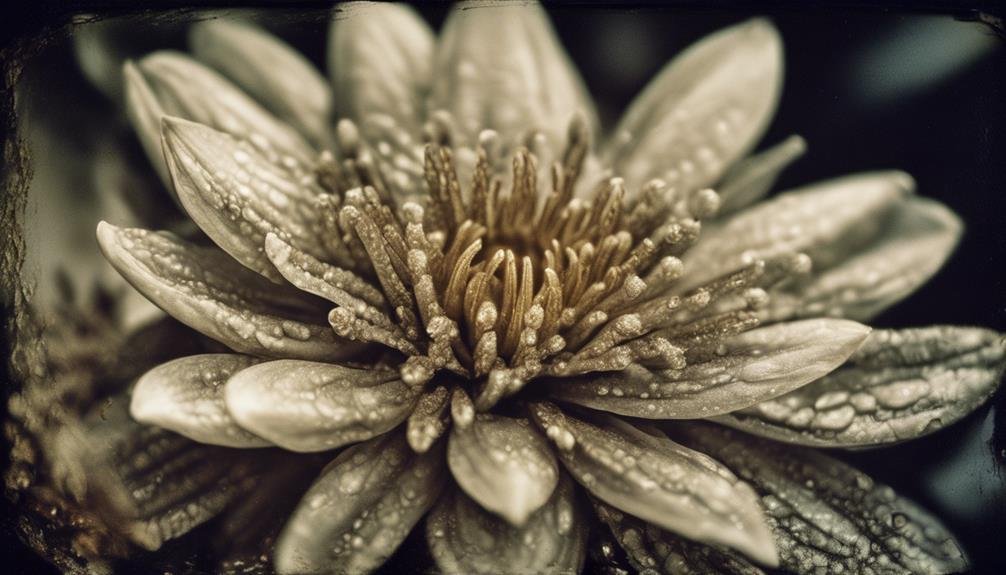
To achieve maximum sharpness and depth of field in mirrorless photography, photographers can effectively employ focus stacking techniques. This method involves taking multiple images of the same scene, each with a different focal point, and then blending them together using specialized software. By utilizing focus stacking, photographers can overcome the limitations of depth perception in macro photography and capture intricate details with exceptional clarity.
- Enhanced Depth Perception: Focus stacking allows photographers to create images with unparalleled depth, bringing both the foreground and background into sharp focus. This is particularly beneficial when capturing close-up shots in macro photography, where shallow depth of field can be a challenge.
- Sharper Image Quality: Through focus stacking, photographers can ensure that every part of the subject is in focus, resulting in exceptionally sharp and detailed images. This is especially advantageous for subjects with intricate textures and delicate features.
- Creative Control: Focus stacking provides photographers with the flexibility to experiment with different focus points and achieve a unique visual perspective. It opens up creative possibilities for portraying subjects in innovative ways, allowing for greater artistic expression.
Maximizing Low Light Performance
Having mastered the technique of focus stacking to enhance depth perception and image quality in mirrorless photography, we now turn our attention to maximizing low light performance to capture stunning images in challenging lighting conditions. When it comes to low light techniques, utilizing a wider aperture can help gather more light, allowing for faster shutter speeds and reducing the risk of camera shake. Additionally, adjusting the ISO sensitivity can significantly impact low light performance. While higher ISO settings can make the camera more light-sensitive, they can also introduce digital noise, affecting image quality. To combat this, employing noise reduction strategies such as in-camera noise reduction or post-processing software can help maintain image clarity. Furthermore, exploring the use of prime lenses with wider apertures can be advantageous in low light situations, as they allow for more light to reach the camera sensor. By implementing these low light techniques and noise reduction strategies, photographers can elevate their mirrorless photography in challenging lighting conditions, capturing captivating images with impressive clarity and detail.
Implementing Creative Composition
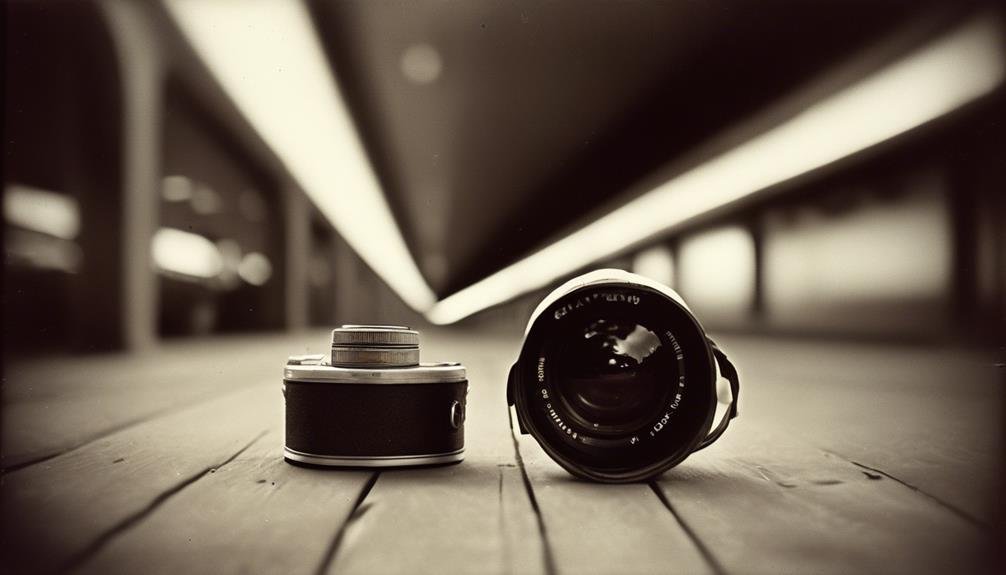
Exploring various angles and perspectives can add depth and visual interest to mirrorless photography compositions. Creative framing and unique perspectives are essential to capturing attention-grabbing images. To elevate your mirrorless photography, consider the following tips:
- Experiment with unconventional angles: Don't be afraid to crouch down low or climb to a higher vantage point to capture a unique perspective. Changing your shooting angle can completely transform the composition and bring a fresh, dynamic element to your photos.
- Utilize negative space: Embracing negative space in your compositions can create a sense of minimalism and draw focus to the main subject. Consider incorporating empty areas around your subject to evoke a feeling of simplicity and sophistication.
- Play with framing techniques: Frame your subject with elements in the foreground, such as foliage, doorways, or windows. This technique adds depth to your images, guiding the viewer's eye towards the main focal point while creating a sense of context and storytelling.
Leveraging Electronic Viewfinder Advantages
As we immerse ourselves in the world of mirrorless photography, the electronic viewfinder emerges as a powerful tool, offering unique advantages that enhance the precision and creativity of our compositions. One of the key benefits of electronic viewfinders (EVFs) is the ability to customize the display to suit our individual preferences and shooting conditions. By leveraging electronic viewfinder settings, we can optimize the viewing experience and achieve greater control over our images. Here are some tips for maximizing the advantages of electronic viewfinders:
| Viewfinder Customization | Advantages | Electronic Viewfinder Settings Tips |
|---|---|---|
| Adjusting brightness and color balance | Provides a more accurate preview of the final image | Experiment with different settings to find the most natural and true-to-life representation of the scene. |
| Enabling focus peaking and highlight alerts | Enhances the ability to achieve precise focus and exposure | Utilize these features to ensure critical focus and avoid overexposure in high contrast scenes. |
| Displaying gridlines and level indicators | Facilitates better composition and horizontality | Use these visual guides to align elements within the frame and maintain straight horizons. |
| Customizing information display | Offers flexibility in monitoring camera settings | Tailor the information displayed to your shooting style, whether it's minimalistic or data-rich. |
Customizing Camera Settings
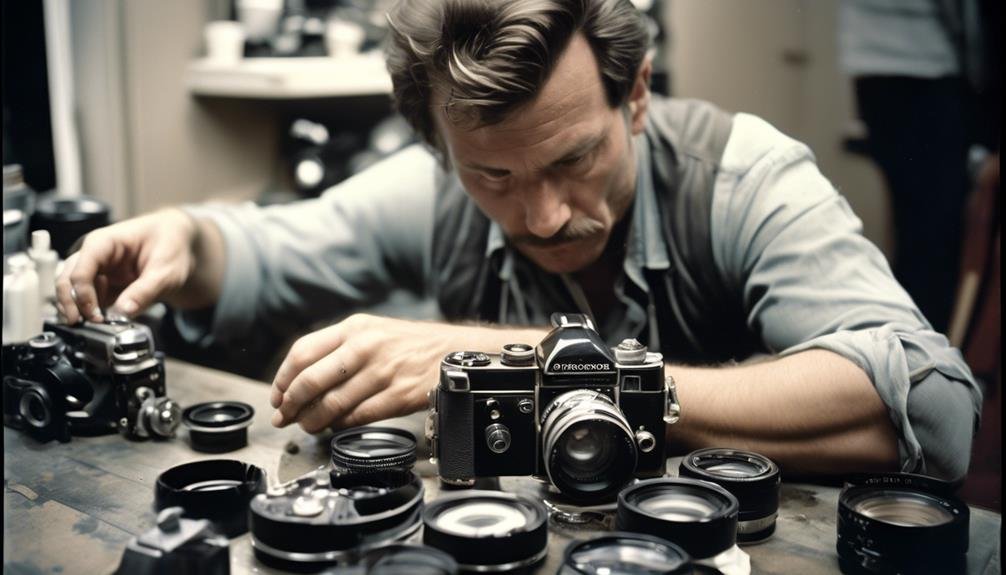
We can optimize our mirrorless camera's performance by customizing the settings to suit our specific shooting needs and preferences. Customizing presets allows us to quickly switch between different shooting scenarios, saving time and ensuring we never miss a shot. Manual adjustments give us full control over exposure, focus, and white balance, empowering us to capture the perfect image in any lighting conditions. Additionally, customizing the function buttons on our mirrorless camera enables us to access frequently used settings with ease, streamlining our workflow and allowing for seamless shooting experiences.
When customizing presets, it's essential to consider our shooting style and the environments we frequently work in. By tailoring presets to specific genres such as landscape, portrait, or sports photography, we can achieve consistent, high-quality results without the need for extensive post-processing. Manual adjustments provide the flexibility to fine-tune settings on the fly, ensuring that each image reflects our creative vision accurately and authentically. Finally, customizing function buttons according to our preferences enhances efficiency and allows us to focus on capturing the perfect moment without distractions.
Exploring Advanced Autofocus Techniques
Let's talk about taking your autofocus skills to the next level. Autofocus area selection allows us to pinpoint exactly where we want the camera to focus, giving us more control over our compositions. Tracking moving subjects will help ensure sharp, in-focus shots even when the subject is on the move.
Autofocus Area Selection
Exploring advanced autofocus techniques allows photographers to achieve precise focus in various shooting scenarios, enhancing the quality of mirrorless photography. When it comes to autofocus area selection, mastering manual focus techniques and selective focus can significantly elevate your photography. Additionally, utilizing autofocus tracking enables the camera to continuously adjust focus as the subject moves, ensuring sharp, clear images. Moreover, employing focus lock allows you to lock the focus on a specific subject, even if it moves out of the initial focus area. These advanced techniques provide greater control over the focus point, allowing photographers to capture stunning, well-defined images in dynamic and challenging shooting situations. By understanding and utilizing autofocus area selection effectively, photographers can elevate the quality and creativity of their mirrorless photography.
Tracking Moving Subjects
Mastering manual focus techniques and selective focus is essential for achieving precise focus in various shooting scenarios, and when it comes to tracking moving subjects, these advanced autofocus techniques become even more crucial for capturing dynamic and fast-paced scenes. Predictive tracking is a game-changer when it comes to capturing subject motion. It allows the camera to anticipate where a moving subject will be at the exact moment of capture, ensuring sharp focus. Continuous autofocus is another powerful tool for capturing moving targets. This mode enables the camera to continuously adjust focus as the subject moves within the frame, ensuring that the subject remains sharp throughout the sequence. By mastering these advanced autofocus techniques, photographers can confidently capture the energy and excitement of dynamic subjects in motion.
| Advanced Autofocus Techniques |
|---|
| Predictive Tracking |
| Continuous Autofocus |
Embracing High-Speed Shooting Modes
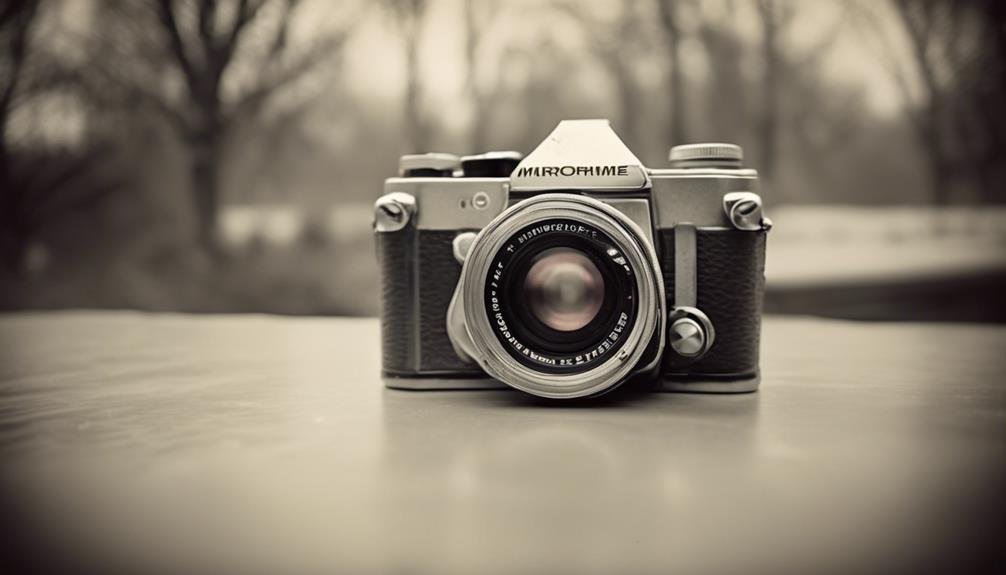
Embracing high-speed shooting modes allows photographers to capture fast-moving subjects with precision and clarity, enhancing the overall quality of their mirrorless photography. When it comes to high-speed photography, mastering the use of these shooting modes can make a significant impact on the outcome of your shots. Here are some key benefits and tips for making the most of high-speed shooting modes:
- Freezing Action: High-speed shooting modes enable photographers to freeze fast-paced action, whether it's a speeding car, a flying bird, or a sports event. This capability allows for crisp, detailed images that perfectly capture the intensity of the moment.
- Versatility in Motion Capture: By utilizing high-speed shooting modes, photographers gain the versatility to adapt to various motion speeds and styles. Whether it's a split-second movement or a continuous flow, these modes provide the flexibility needed to achieve stunning results in any situation.
- Optimizing Shutter Speed: Understanding the relationship between high-speed shooting modes and shutter speed is crucial. It's essential to experiment with different shutter speeds to find the optimal settings for freezing motion while maintaining image clarity.
Optimizing Image Stabilization
To achieve optimal image stabilization in mirrorless photography, understanding the key principles and settings is essential for capturing sharp, steady shots. When it comes to tripod stability, it's important to invest in a sturdy, reliable tripod that can support the weight of your camera and lens. Look for one with adjustable legs and a solid ball head for maximum stability. Additionally, consider using a remote shutter release or the camera's self-timer function to minimize any vibrations caused by physically pressing the shutter button.
When it comes to lens stabilization, many modern mirrorless lenses come equipped with built-in image stabilization to reduce blur caused by camera shake. This feature is especially beneficial for handheld shooting, allowing you to capture clear, crisp images even in low light conditions. However, it's important to remember that image stabilization is not a cure-all for every situation. While it can greatly improve the likelihood of getting a sharp shot, it won't freeze subject motion or guarantee perfect image quality in every scenario. Understanding the strengths and limitations of image stabilization will help you make the most of this technology and elevate your mirrorless photography.
Post-Processing for Mirrorless Mastery
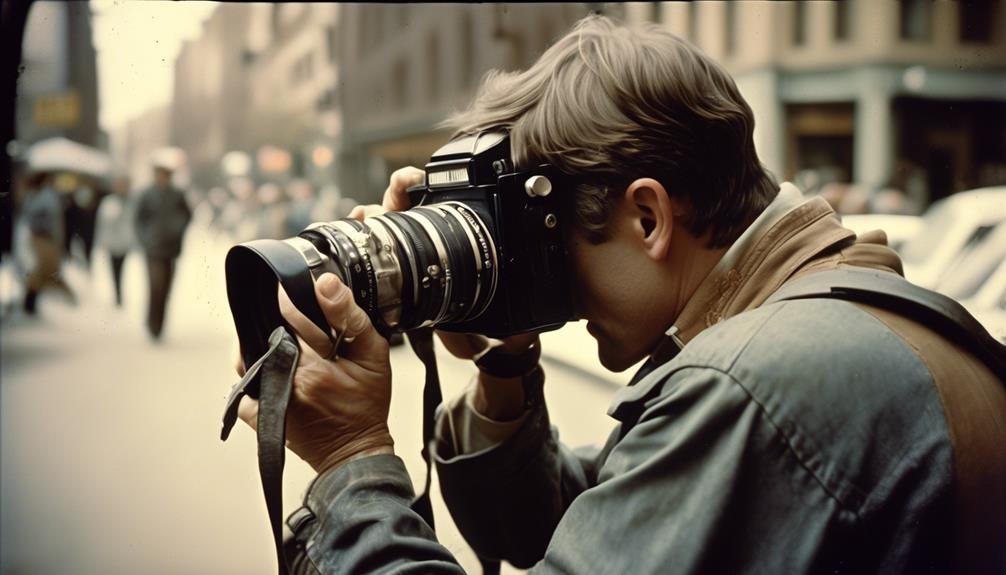
Understanding the essential post-processing techniques is crucial for enhancing the quality and visual impact of mirrorless photography. When it comes to post-processing, there are several key areas that can significantly elevate the final output of your mirrorless images. Here are some important post-processing techniques to master:
- Color grading techniques: Color grading plays a vital role in setting the mood and tone of your photos. With mirrorless photography, you have the flexibility to experiment with various color grading techniques to achieve the desired aesthetic for your images.
- Noise reduction: As mirrorless cameras are known for their impressive performance in low-light conditions, mastering noise reduction techniques is essential. By effectively reducing noise in post-processing, you can ensure that your mirrorless photos maintain exceptional clarity and detail, even in challenging lighting situations.
- Retouching skills: Refining your retouching skills can make a significant difference in the overall quality of your mirrorless photography. Whether it's removing imperfections or enhancing specific elements in your images, honing your retouching abilities can take your photography to the next level.
Frequently Asked Questions
What Are the Best Mirrorless Camera Models for Beginners?
We've compared mirrorless camera models for beginners and found the Sony Alpha a6000 and Fujifilm X-T200 to be top picks. Both offer great image quality, portability, and lens selection, making them ideal for budding photographers.
How Can I Protect My Mirrorless Camera From Environmental Factors Such as Dust and Moisture?
We always say, "An ounce of prevention is worth a pound of cure." When it comes to protecting our mirrorless cameras, we invest in protective gear and prioritize regular camera maintenance to keep them safe from dust and moisture.
What Are Some Common Accessories That Can Enhance Mirrorless Photography?
Lens filters and camera straps are common accessories that can enhance mirrorless photography. They offer versatility and protection. We've found that using high-quality filters can improve image quality, and comfortable straps help in extended shooting sessions.
How Can I Troubleshoot Common Technical Issues With My Mirrorless Camera?
When troubleshooting common technical issues with your mirrorless camera, we suggest checking for firmware updates and ensuring sensor cleaning. These simple steps can often resolve many issues and keep your camera in top condition for elevated photography.
What Are Some Recommended Resources for Further Learning and Improvement in Mirrorless Photography Techniques?
We found great resources for further learning in mirrorless photography techniques. Online courses and workshops offer in-depth instruction, while photography forums and communities provide valuable insights and feedback. These are all fantastic avenues for improvement.
